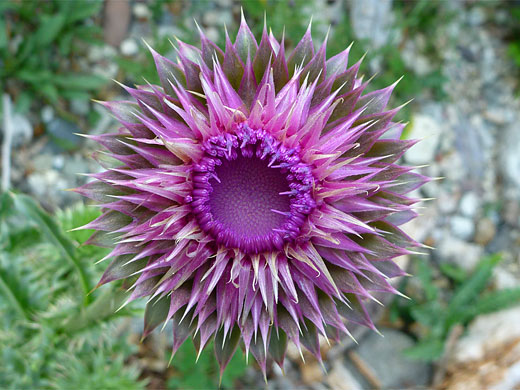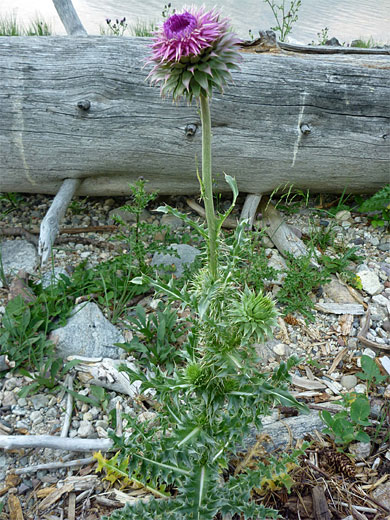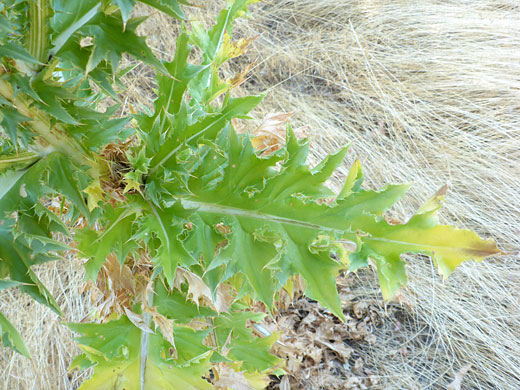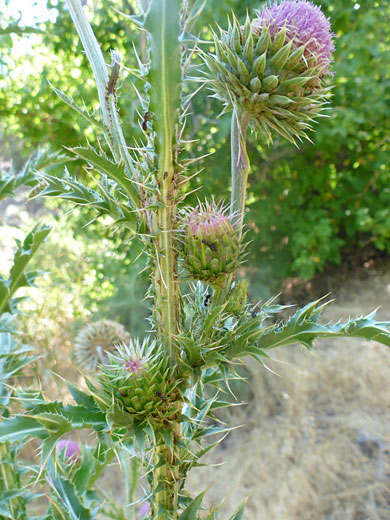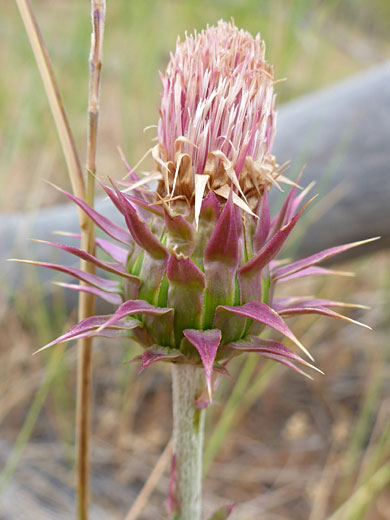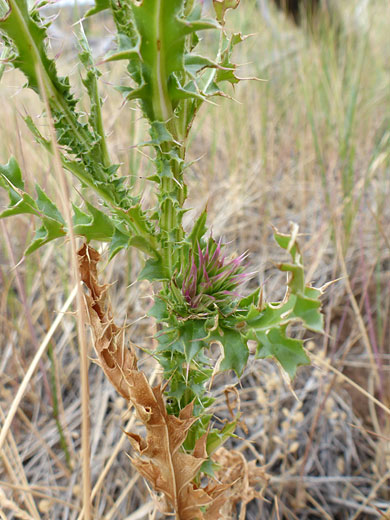Common names:
Musk thistle, nodding thistle
Family:
Scientific name:
Carduus nutans
Main flower color:
Range:
All the western states (non-native); classed as noxious
Height:
Up to 8 feet
Habitat:
Roadsides, cultivated or disturbed ground; up to 10,000 feet
Leaves:
Lanceolate, up to 15 inches long; sharply divided, with a long whitish spike on each lobe. Surface is smooth and shiny
Season:
July to September
As with many other thistles in America, carduus nutans is an introduced species, native to Asia and Europe, now a troublesome weed across most of the US. The flower head is formed of numerous narrow disc florets, rich purple in color, and reaching a diameter of 2 inches. Below are several rings of particularly large and spiny bracts, initially green then becoming purple with maturity, when the flower has a symmetric spherical shape, and tends to droop downwards. Flowers are supported by a thick, rigid, lightly hairy stem that branches readily and has the familiar prickly leaves along the lower half, especially around the base. In favorable locations the plant may have as many as 50 flower heads.
All Contents © Copyright The American Southwest | Comments and Questions | Contribute | Site Map


